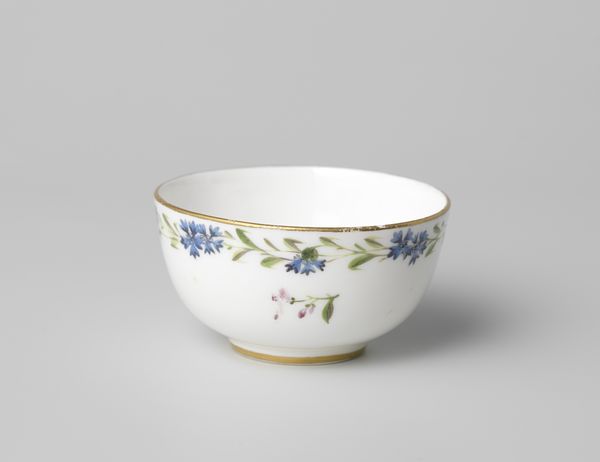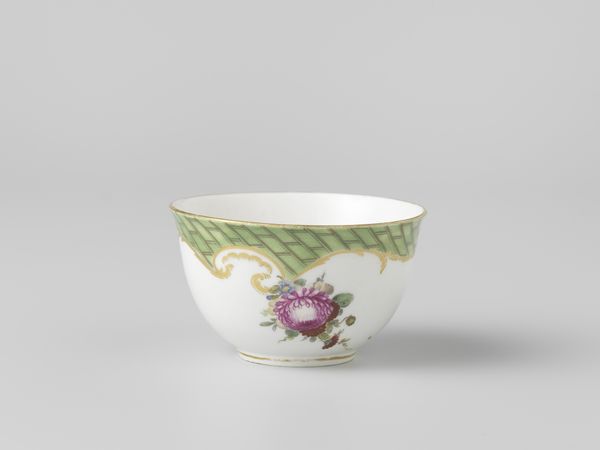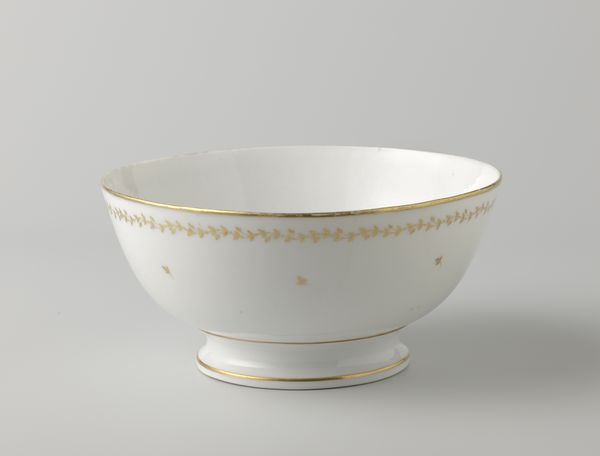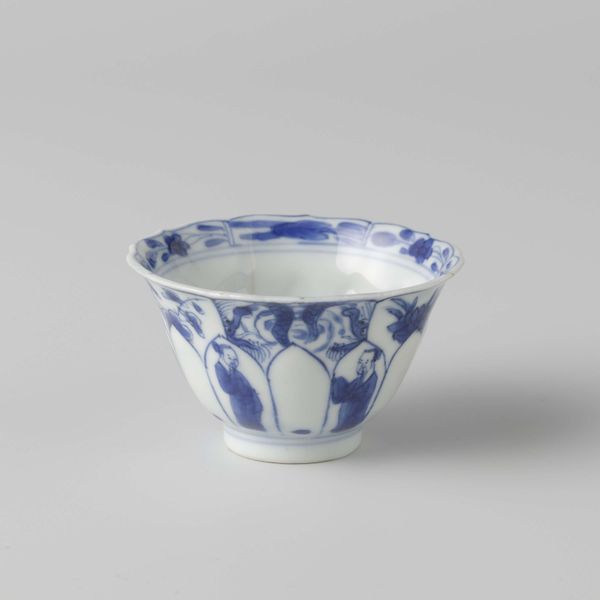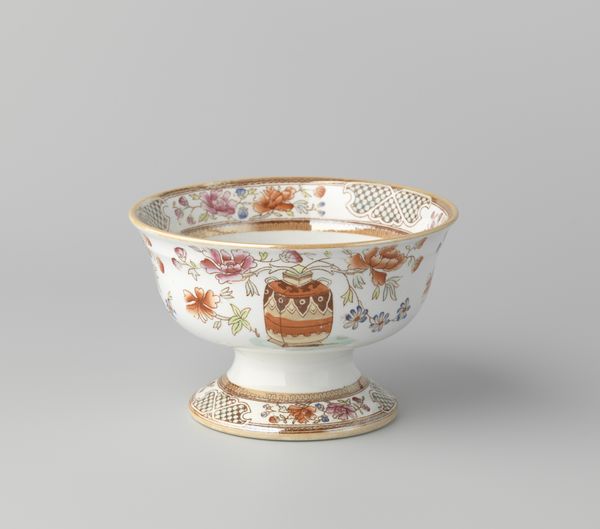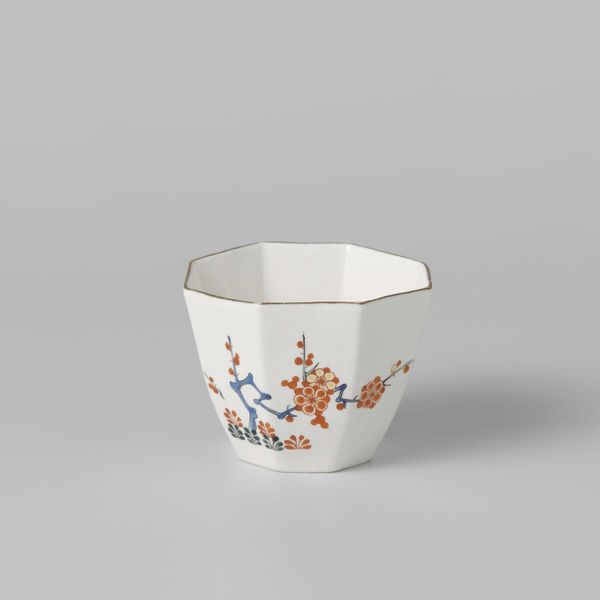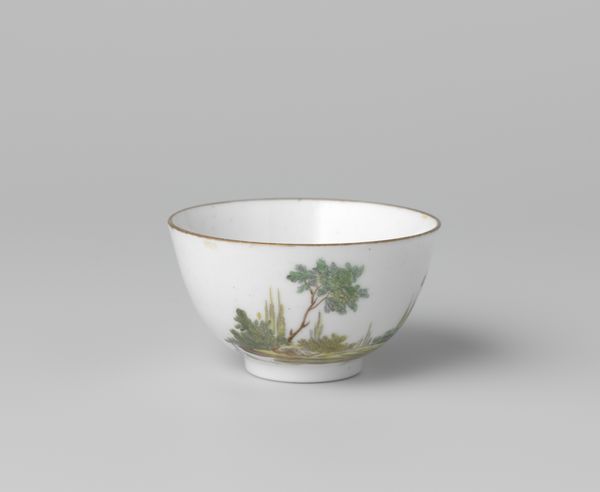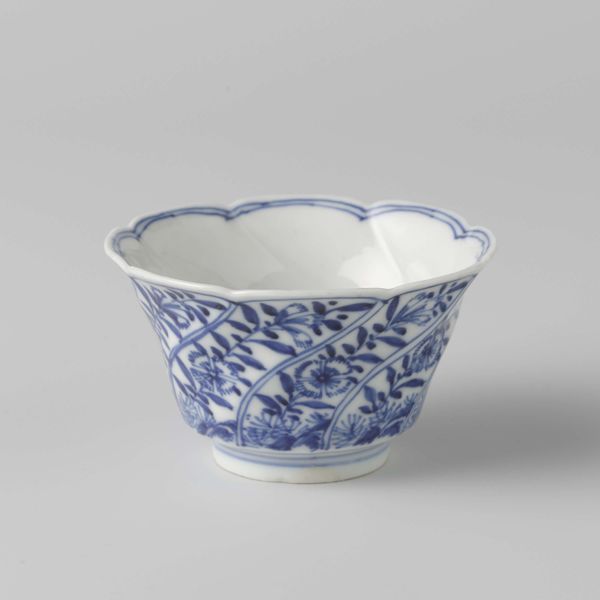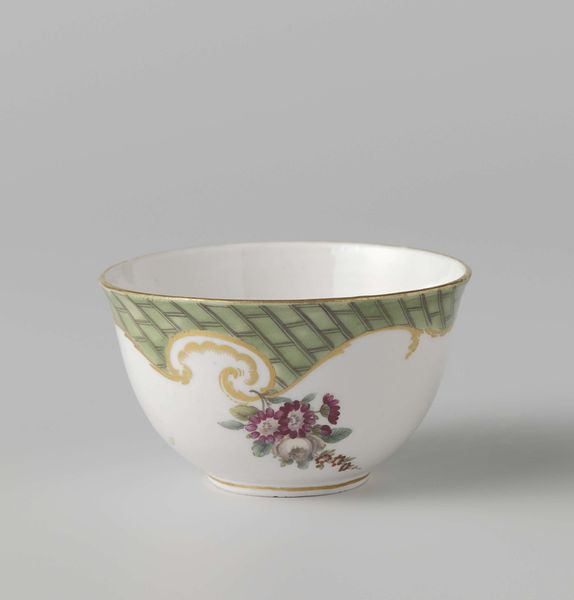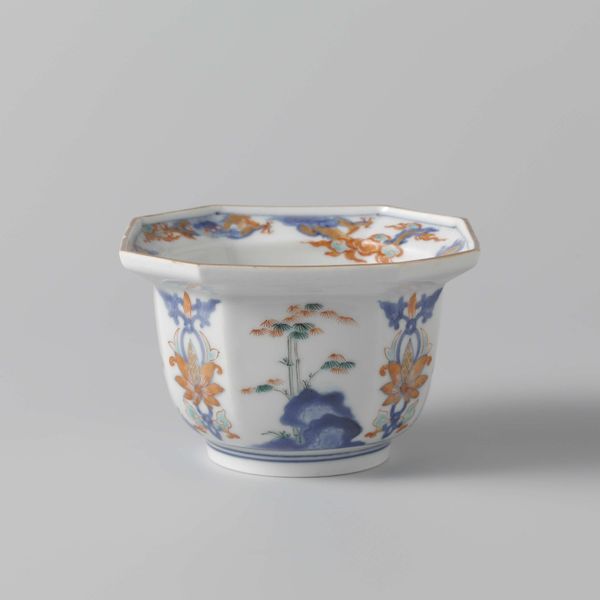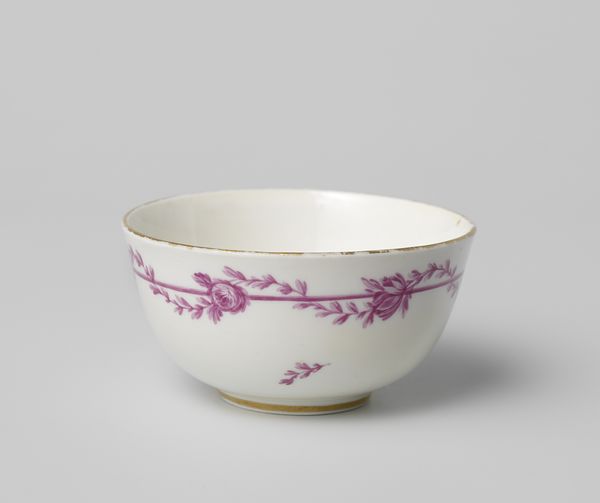
#
studio photography
#
product photograph merchandise
#
advertising product shot
#
product studio photography
#
product promotion photography
#
product fashion photography
#
lifestyle product photography
#
round design
#
retro 'vintage design
#
product design photgrpaphy
Dimensions: height 3.9 cm, diameter 6.7 cm, diameter 3.3 cm
Copyright: Rijks Museum: Open Domain
Editor: Here we have a charming cup from Le Nove, created sometime between 1765 and 1799. It’s ceramic, adorned with delicate floral sprays. The simple elegance is what strikes me most. What can you tell us about its context? Curator: Well, this piece reflects the 18th century’s fascination with both classicism and the natural world. The restrained decoration and clean lines echo Neoclassical ideals, emphasizing order and reason, traits desired after periods of unrest.. Consider the socio-political landscape: The Enlightenment was in full swing, challenging aristocratic excess with middle class virtues. Where do you think this cup might have fit into this cultural moment? Editor: I imagine it would be owned and used by an upper-middle-class family or member of the merchant class who favored functionality. But wasn't porcelain still considered pretty precious? Curator: Yes, precisely. Porcelain production was highly competitive. Royal patronage and the establishment of manufactories like Le Nove aimed to compete with Asian imports and assert national prestige. Each piece, even something as seemingly simple as this cup, carried a weight of national identity and economic ambition. How do museums today shape our perception of these objects? Editor: That's a fascinating point! Museums, in displaying and contextualizing these objects, really give them a cultural relevance beyond mere utility. By displaying something as a "work of art," doesn't that almost change what it actually is, or its function? Curator: Absolutely. Placing everyday objects in a museum elevates them, often disconnecting them from their original, intended function, imbuing them with new symbolic meaning and making them serve as representatives of an era. Considering this reframing is a powerful aspect of art history, wouldn't you agree? Editor: Definitely. I've gained a new perspective on this piece and the narratives it can carry. Thanks for the insightful experience! Curator: My pleasure. These pieces are a conduit of social values!
Comments
No comments
Be the first to comment and join the conversation on the ultimate creative platform.

